The Lyre Harp is a beautiful and ancient instrument that bridges simplicity and grace. Whether you’re a beginner exploring your first melodies or advancing to more expressive pieces, this guide will help you grow steadily with ten songs, organized by skill level and designed for real practice.
1. Learning Path Overview
We’ll divide the practice into three phases — Beginner, Intermediate, and Advanced — so that your hands, rhythm, and musical sensitivity grow together. Each level includes repertoire that builds specific techniques, from simple finger placement to two-hand coordination and expressive phrasing.
Level 1: Beginner (0–6 months)
At this stage, you’ll learn to hold the Lyre properly, pluck clean notes, and follow rhythmic patterns. Start slow, focus on clarity, and get familiar with the natural resonance of your harp.
1. “Twinkle Twinkle Little Star”
Background: A universally known melody, ideal for practicing steady rhythm and finger placement.
Technique Focus: Use alternating thumbs and index fingers. Keep each note consistent in tone and volume.
Practice Tips: Play one line at a time. Record your progress and listen for clarity in tone.
Goal: Develop stable rhythm and comfortable finger transitions.
2. “Ode to Joy” – Beethoven
Background: Adapted from Beethoven’s Symphony No. 9, this melody introduces simple phrasing and uplifting harmony.
Technique Focus: Focus on clean melodic phrasing, maintaining an even tempo.
Practice Tips: Break the song into 4-bar sections. Slowly increase tempo once accuracy improves.
Goal: Achieve smooth melodic flow and steady rhythm.
3. “Mary Had a Little Lamb”
Background: A simple and repetitive folk melody ideal for early hand coordination.
Technique Focus: Alternate right-hand fingers naturally; keep rhythm even.
Practice Tips: Use slower tempo first, repeat until you can play without looking at strings.
Goal: Build basic coordination and muscle memory.
4. “Jingle Bells”
Background: A cheerful tune perfect for testing rhythmic precision.
Technique Focus: Practice consistent plucking and rhythmic emphasis.
Practice Tips: Use a metronome, isolate the chorus to refine articulation.
Goal: Improve hand coordination and develop rhythmic accuracy.
Level 2: Intermediate (6–12 months)
Intermediate songs introduce both-hand plucking, harmony, and expressive shaping. You’ll start to form phrases that flow naturally.
5. “Canon in D” – Pachelbel
Background: A timeless Baroque masterpiece adapted into simpler chord progressions for Lyre Harp.
Technique Focus: Smooth transitions between chords and flowing arpeggios.
Practice Tips: Work on separate hand parts; merge when confident.
Goal: Master consistent timing and harmony balance.
6. “The Entertainer” – Scott Joplin
Background: A fun ragtime classic emphasizing rhythmic syncopation.
Technique Focus: Keep melody dominant while maintaining bass rhythm.
Practice Tips: Divide hands, isolate rhythmic parts before merging.
Goal: Strengthen timing and left-hand control.
7. “Greensleeves”
Background: A beautiful English folk melody in minor mode, perfect for emotional expression.
Technique Focus: Smooth legato transitions, dynamic control.
Practice Tips: Play slowly with a focus on tone color and sustain.
Goal: Build sensitivity and expressive dynamics.
Level 3: Advanced (1 year+)
Advanced players explore musicality and emotional storytelling. These pieces require patience and interpretive maturity.
8. “Clair de Lune” – Debussy
Background: A poetic piece representing moonlight and tranquility, adapted beautifully to Lyre Harp.
Technique Focus: Soft dynamics, smooth flow, even tone production.
Practice Tips: Divide complex sections, use slow tempo for emotional control.
Goal: Develop touch sensitivity and expressive phrasing.
9. “River Flows in You” – Yiruma
Background: A modern favorite that translates well to the Lyre Harp’s resonant strings.
Technique Focus: Melodic phrasing and control of resonance.
Practice Tips: Focus on legato finger transitions and volume contrast.
Goal: Achieve smooth expressiveness and emotional balance.
10. “Moonlight Sonata” – Beethoven
Background: A lyrical, melancholic classic suitable for experienced players seeking depth.
Technique Focus: Even plucking, controlled tempo, and expressive sustain.
Practice Tips: Divide phrases, refine dynamics gradually.
Goal: Explore deep emotional expression and phrasing.




